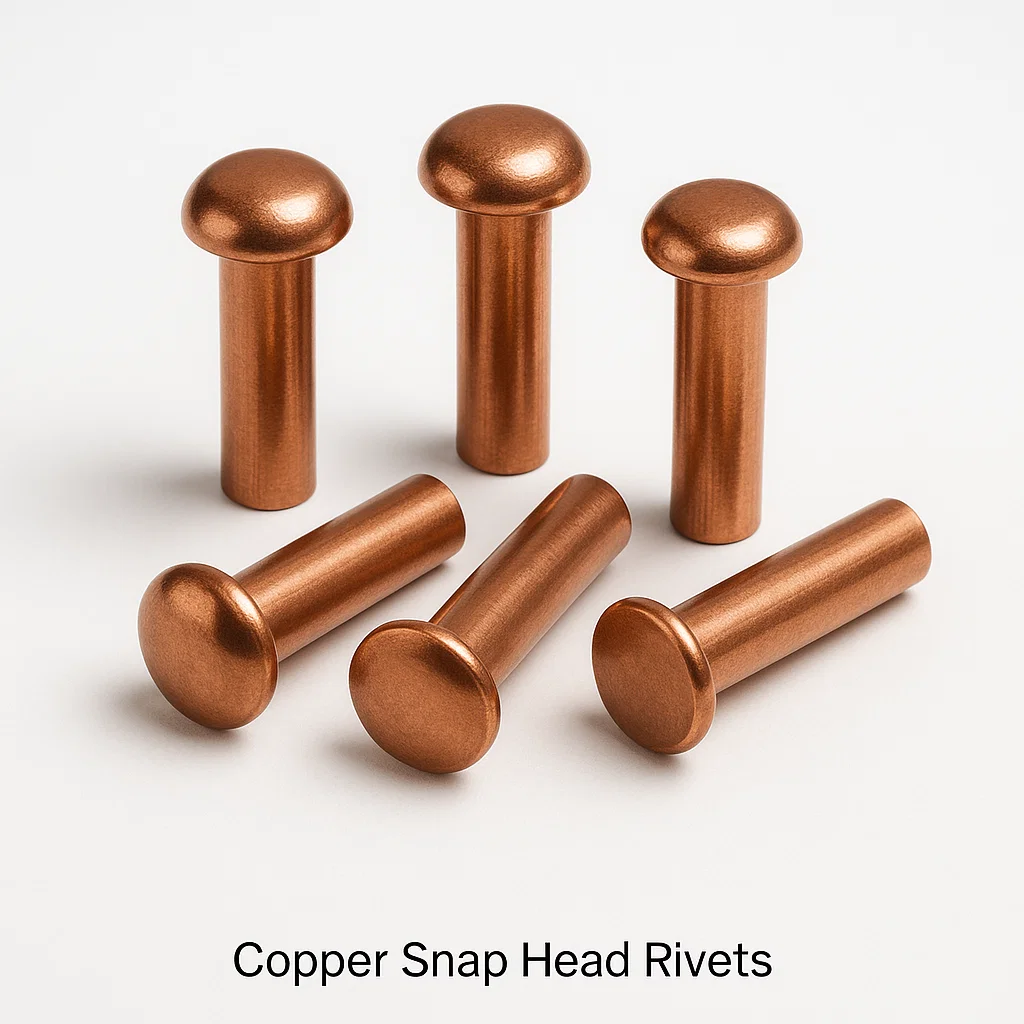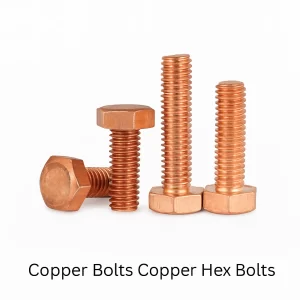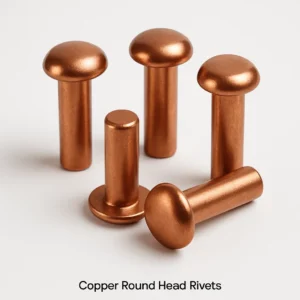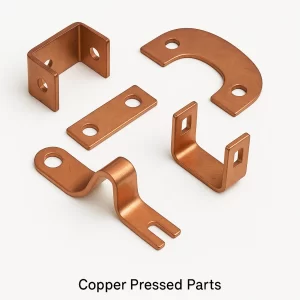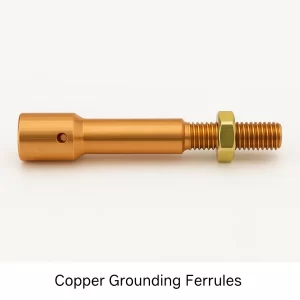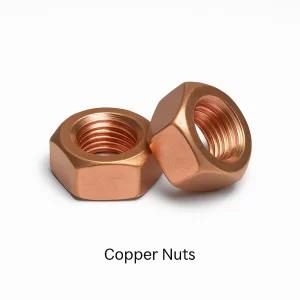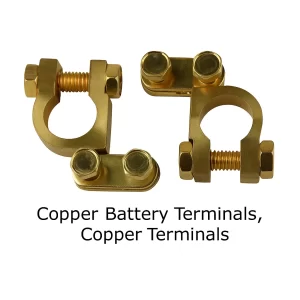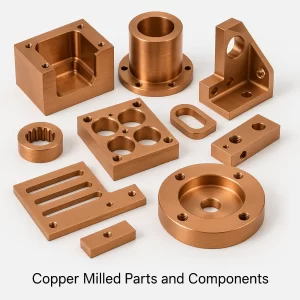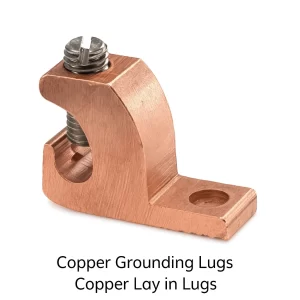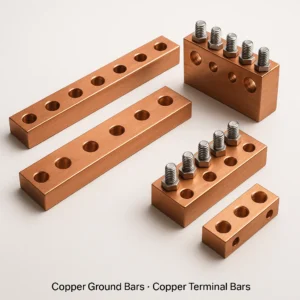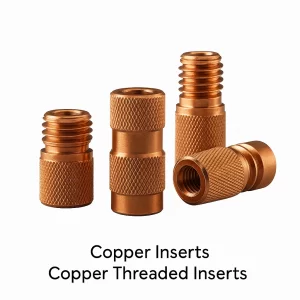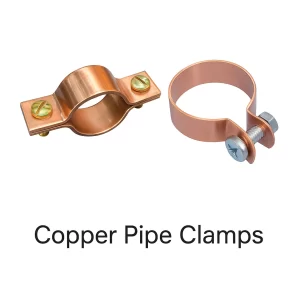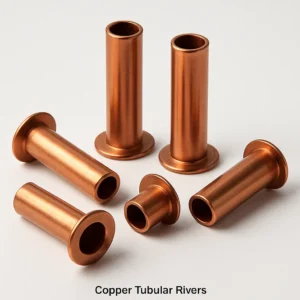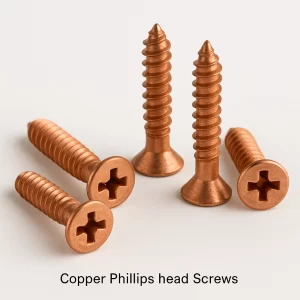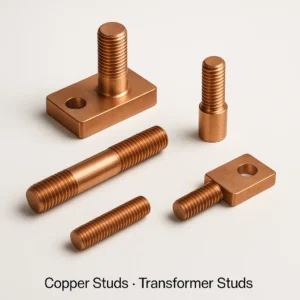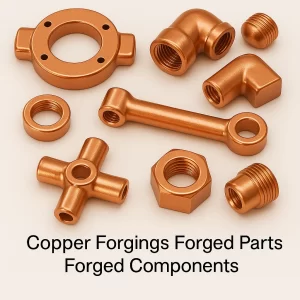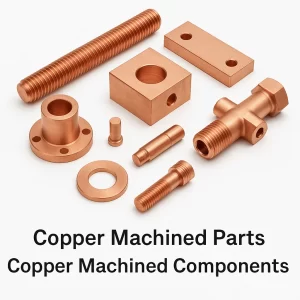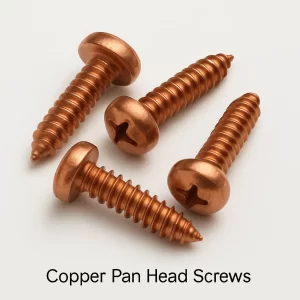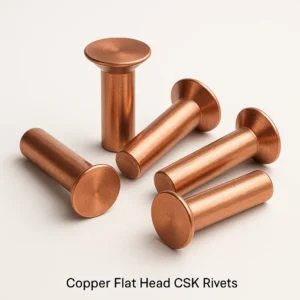Comprehensive Overview of Copper Snap Head Rivets
We are one of the leading manufacturers and exporters of Copper Snap Head Rivets and Button Head Copper Rivets from India. We have been supplying precision copper snap head rivets, copper dome head rivets, copper round head rivets, copper button head fasteners, and specialty copper solid rivets to the world market for many decades. Our state-of-the-art manufacturing facility specializes in producing high-quality copper snap head rivets using advanced cold heading technology, precision wire drawing operations, automatic rivet forming machines, multi-blow heading processes, surface finishing operations, and comprehensive quality testing. With over three decades of global experience in copper rivet manufacturing, we serve diverse industries including copper snap head rivets for aircraft structural assembly and aerospace applications, copper button head rivets for shipbuilding and marine construction, copper snap head rivets for railway coach and wagon assembly, copper dome head rivets for bridge and structural steel fabrication, copper snap head rivets for boiler and pressure vessel construction, copper button head rivets for automotive chassis assembly, copper snap head rivets for heavy machinery and equipment manufacturing, copper dome head rivets for metal furniture and architectural metalwork, copper snap head rivets for agricultural equipment assembly, and copper button head rivets for general engineering and industrial fabrication. Our expertise encompasses working with various copper grades including pure Copper C11000 snap head rivets offering excellent cold working properties and superior corrosion resistance, Copper C10200 oxygen-free snap head rivets for specialized applications, tin-plated copper snap head rivets for enhanced corrosion protection in marine environments, nickel-plated copper snap head rivets for high-temperature applications, and specialty alloy copper snap head rivets for demanding conditions. We manufacture copper snap head rivets ranging from small 3mm diameter rivets for light structural work to large 20mm diameter rivets for heavy-duty applications with lengths from 6mm to 150mm, all maintaining superior head geometry, precise shank dimensions, consistent material properties, excellent surface finish, and reliable performance in critical structural fastening, pressure vessel assembly, and load-bearing joint applications.
Copper Snap Head Rivets – Solid Structural Fastening Rivets
Copper Snap Head Rivets represent heavy-duty solid fasteners featuring a distinctive hemispherical head with larger diameter-to-height ratio compared to standard round head rivets, designed for permanent structural joining requiring high shear and tensile strength, excellent bearing surface distribution, professional finished appearance, and reliable performance under dynamic loading conditions. These copper snap head rivets are manufactured from solid copper wire through precision cold heading processes creating the characteristic low-profile dome head, accurate shank dimensions, and uniform material properties throughout the rivet body.
Copper snap head rivets find extensive applications in:
- Aerospace and Aircraft: Aircraft fuselage riveting, wing assembly structural joints, landing gear components, aircraft interior panel fastening, helicopter airframe assembly, and aerospace structural fabrication requiring non-magnetic fasteners
- Marine and Shipbuilding: Ship hull plate riveting, bulkhead assembly, deck structure fastening, marine equipment mounting, boat building structural joints, offshore platform construction, and corrosion-resistant marine structural fastening
- Railway Applications: Railway coach body assembly, wagon structural riveting, bogie frame fastening, railway car interior assembly, locomotive component mounting, and rail infrastructure construction
- Bridge and Structural Steel: Bridge girder assembly, structural steel fabrication, truss assembly riveting, tower construction, transmission tower fastening, and heavy structural engineering applications
- Boiler and Pressure Vessels: Boiler drum assembly, pressure vessel shell riveting, heat exchanger construction, tank fabrication, industrial vessel assembly, and high-pressure equipment fastening
- Automotive and Heavy Vehicles: Truck chassis assembly, trailer frame riveting, heavy vehicle body construction, bus body assembly, agricultural equipment frames, and construction equipment fabrication
- Industrial Machinery: Heavy machinery frame assembly, equipment mounting, machine tool construction, conveyor system structural joints, material handling equipment, and industrial fabrication
- Metal Furniture and Architecture: Architectural metalwork, decorative structural elements, metal furniture frame assembly, industrial shelving systems, storage rack construction, and visible structural fastening
Our copper snap head rivet manufacturing services include engineering consultation for rivet selection based on joint design, material thickness, load requirements, installation method, and environmental conditions, material recommendation including pure copper C11000 for standard structural applications with excellent formability and corrosion resistance, oxygen-free copper C10200 for critical applications requiring maximum reliability, tin-plated copper for marine and outdoor environments, and nickel-plated copper for high-temperature or corrosive conditions, custom rivet design for non-standard head dimensions, special shank configurations, unique grip lengths, or application-specific features, prototype development with dimensional verification, installation testing, and joint performance evaluation, production manufacturing using precision cold heading equipment with multi-blow forming for larger diameters, various configurations including standard snap head rivets with low-profile hemispherical heads, large flange snap head rivets for soft materials, countersunk snap head combinations, modified snap head geometries, and custom head marking or identification, head geometry specifications with head diameter typically 1.6-1.8 times shank diameter (larger than button head), head height typically 0.45-0.55 times shank diameter (lower profile than round head), smooth hemispherical dome contour, generous head-to-shank fillet radius reducing stress concentration, and aesthetic professional appearance suitable for visible installations, shank specifications including solid cylindrical shanks with diameters from 3mm to 20mm, length options from 6mm to 150mm measured under head, grip range calculations for material stack-up from 3mm to 100mm, shank tolerance h13 class (±0.03mm for 6mm diameter), and straightness within 0.5mm per 100mm length, dimensional capabilities for light structural rivets (3-6mm diameter) for sheet metal and thin structural assembly, medium structural rivets (6-12mm diameter) for general fabrication and equipment assembly, heavy structural rivets (12-20mm diameter) for bridge, vessel, and heavy machinery applications, and custom sizes for specialized applications, tolerance specifications including head diameter ±3% of nominal, head height ±5% of specification, shank diameter tolerance h13 class, overall length ±0.5mm to ±1.0mm depending on total length, and perpendicularity of head to shank within 1° maximum deviation, surface treatments including bright tin plating (5-15 microns) per ASTM B545 for marine and corrosive environments, nickel plating (10-20 microns) for high-temperature and chemical resistance, hot-dip galvanizing for severe corrosion protection, clear protective coating for bare copper, and special coatings per customer requirements, mechanical properties including tensile strength 220-340 MPa depending on temper, shear strength 140-220 MPa, hardness 45-110 HV depending on work hardening, elongation 10-45% based on temper condition, and fatigue resistance suitable for dynamic loading applications, and complete documentation including material certificates with chemical composition analysis, dimensional inspection reports with statistical data, mechanical test results including tensile and shear strength, impact toughness data where required, compliance certificates to relevant standards, and installation procedure recommendations.
We accommodate copper snap head rivet production from small quantities for prototype assemblies and custom machinery to high-volume production exceeding 500,000 pieces for OEM manufacturers and large construction projects, with material specifications conforming to ASTM B152 for copper sheet, strip and rolled bar, ASTM B187 for copper rod, bar and shapes, ASTM B1, B2, B3 for copper wire, MS20426 (reference standard for rivet geometry), DIN 124 for snap head rivets, ISO 1051 for solid rivet specifications, and BS 4620 for rivets for general engineering purposes. Lead time typically ranges from four to six weeks for custom designs including engineering, material procurement, tooling preparation, cold heading setup, production run, surface treatment, testing, and documentation, with shorter lead times of 1-2 weeks for standard catalog sizes from maintained inventory.
Copper Material Grades and Snap Head Rivet Specifications
Copper Material Specifications and Standards
| Copper Grade | Key Properties | Typical Applications | Standards |
|---|---|---|---|
| Copper C11000 | 99.9% pure copper, excellent cold working, superior corrosion resistance | General structural rivets, marine applications, standard fabrication | ASTM B152, B187, DIN 1787, ISO 1051 |
| Copper C10200 | Oxygen-free copper, maximum ductility, premium quality | Critical aerospace applications, high-reliability joints | ASTM B170, B152 |
| Tin-Plated Copper | 5-15 micron tin coating, excellent marine corrosion protection | Shipbuilding, offshore structures, marine equipment | ASTM B545, DIN 50966 |
| Nickel-Plated Copper | 10-20 micron nickel, high-temperature resistance to 200°C | Boiler applications, pressure vessels, chemical equipment | ASTM B689, DIN 50966 |
Copper Snap Head Rivet Mechanical Properties
| Property | Soft/Annealed | Medium Hard | Hard/Work-Hardened | Tin-Plated | Nickel-Plated |
|---|---|---|---|---|---|
| Tensile Strength | 220-270 MPa | 270-310 MPa | 310-370 MPa | 220-270 MPa | 240-290 MPa |
| Shear Strength | 140-180 MPa | 180-200 MPa | 200-240 MPa | 140-180 MPa | 150-190 MPa |
| Yield Strength | 70-140 MPa | 180-240 MPa | 240-320 MPa | 70-140 MPa | 90-160 MPa |
| Elongation | 35-45% | 15-30% | 5-15% | 30-40% | 25-35% |
| Hardness (Vickers) | 45-70 HV | 75-95 HV | 95-125 HV | 45-70 HV | 65-90 HV |
| Impact Strength | Excellent | Very Good | Good | Excellent | Very Good |
| Operating Temperature | -200 to +150°C | -200 to +150°C | -200 to +150°C | -40 to +105°C | -40 to +200°C |
Standard Snap Head Rivet Sizes and Configurations
Dimensional Standards for Copper Snap Head Rivets
| Nominal Diameter | Head Diameter | Head Height | Grip Range | Typical Applications | Standard |
|---|---|---|---|---|---|
| 3.0mm | 5.1-5.5mm | 1.3-1.7mm | 3-15mm | Light sheet metal, thin structural assembly | DIN 124, ISO 1051 |
| 4.0mm | 6.8-7.2mm | 1.8-2.2mm | 4-20mm | Sheet metal fabrication, light structural | DIN 124, ISO 1051 |
| 5.0mm | 8.5-9.0mm | 2.2-2.8mm | 5-30mm | General fabrication, equipment assembly | DIN 124, ISO 1051 |
| 6.0mm | 10.2-10.8mm | 2.7-3.3mm | 6-40mm | Structural assembly, machinery frames | DIN 124, MS20426 |
| 8.0mm | 13.6-14.4mm | 3.6-4.4mm | 8-55mm | Heavy structural, pressure vessels, marine | DIN 124, MS20426 |
| 10.0mm | 17.0-18.0mm | 4.5-5.5mm | 10-70mm | Bridge construction, heavy machinery, boilers | DIN 124 |
| 12.0mm | 20.4-21.6mm | 5.4-6.6mm | 12-85mm | Heavy structural steel, shipbuilding, bridges | DIN 124 |
| 16.0mm | 27.2-28.8mm | 7.2-8.8mm | 16-110mm | Very heavy structural, ship hulls, large vessels | DIN 124 |
| 20.0mm | 34.0-36.0mm | 9.0-11.0mm | 20-130mm | Extreme heavy-duty, large bridge structures | Custom |
Snap Head Rivet Design Features
Low-Profile Hemispherical Head: Characteristic snap head geometry with flatter dome profile than standard round head, head diameter 1.6-1.8 times shank diameter providing excellent bearing surface, head height 0.45-0.55 times shank diameter creating low-profile appearance, smooth hemispherical contour for aesthetic and aerodynamic benefits, generous fillet radius between head and shank minimizing stress concentration, and professional finished appearance suitable for visible structural applications.
Head Diameter Advantage: Larger head diameter than button or round head rivets distributes clamping force over wider area, reduces bearing stress on joined materials by 20-30% compared to smaller heads, prevents pull-through in softer materials, ideal for sheet metal and thin structural applications, and provides excellent resistance to vibration loosening.
Structural Performance: Solid shank construction providing maximum shear strength, uniform material properties throughout rivet body, work hardening during installation increasing joint strength, excellent fatigue resistance for dynamic loading, and reliable performance in critical structural applications.
Installation Characteristics: Requires standard riveting tools and equipment, compatible with pneumatic rivet hammers and squeeze riveters, controlled upset forming creates secure driven head, consistent installation results with proper tooling, and inspectable joint quality through visual examination of driven head.
Manufacturing Process
Wire Drawing and Material Preparation
Copper rod drawn through multiple dies achieving precise wire diameter with ±0.02mm tolerance, material properties controlled through drawing reduction ratios and intermediate annealing, wire straightening using multi-roller straighteners eliminating coil set, surface inspection for defects, chemical cleaning removing drawing compounds, and wire cutting to calculated slug lengths for specific rivet sizes.
Cold Heading Process
Multi-blow cold heading for larger diameter snap head rivets ensuring complete die fill and uniform head geometry, first blow performs preliminary upsetting increasing stock diameter, intermediate blows progressively form head shape, final blow achieves precise snap head geometry with characteristic low-profile dome, ejection from heading die, typical heading forces 10-150 kN depending on rivet diameter, production speeds 100-250 pieces per minute for medium sizes, and precision tooling maintaining tight dimensional tolerances.
Secondary Operations and Heat Treatment
Shank trimming to final length specifications, chamfering sharp edges at tail end facilitating hole insertion, deburring removing heading flash, stress relief annealing at 200-350°C for controlled hardness, full annealing at 400-600°C for soft temper rivets requiring maximum formability, work hardening retention for medium and hard temper specifications, and controlled cooling preventing thermal distortion.
Surface Treatment and Finishing
Tumbling in ceramic or steel media achieving smooth surface finish, chemical cleaning and activation for plating adhesion, electroplating operations with controlled bath chemistry and current density, hot-dip tinning for thick corrosion protection, post-plating treatments including chromate conversion or clear sealing, mechanical polishing for premium finish requirements, and inspection of coating uniformity and thickness.
Quality Control and Testing
Dimensional inspection using optical comparators and coordinate measuring machines, head geometry verification including diameter, height, and dome profile, shank diameter measurement with micrometers and ring gauges, straightness checking with V-blocks and dial indicators, mechanical testing including tensile strength per ASTM E8, shear strength per ASTM F606, hardness testing across head and shank, impact testing for dynamic applications, metallographic examination of grain structure and work hardening, electrical conductivity measurement where applicable, corrosion testing including salt spray per ASTM B117, and statistical process control monitoring key parameters throughout production.
Installation Methods and Joint Design
Snap Head Rivet Installation Techniques
Pneumatic Rivet Hammer: Standard method for structural riveting using compressed air powered hammers, rivet inserted through pre-drilled holes, bucking bar held on snap head side, hammering forms driven head on tail side, controlled impact energy and duration, suitable for all snap head rivet sizes, production rates 50-200 rivets per hour depending on size and accessibility.
Squeeze Riveting: Hydraulic or pneumatic press applying simultaneous force to both rivet ends, C-frame or alligator-style riveters, controlled squeeze pressure 10-200 kN depending on diameter, forms driven head through progressive deformation, produces superior quality joints with uniform properties, ideal for production environments and critical applications, typical cycle time 5-15 seconds per rivet.
Hot Riveting: Traditional method heating rivets to 800-1000°C for large structural applications, thermal expansion allows easier insertion, cooling contraction creates tight joint, forms driven head while hot, historically used for bridge and ship construction, largely replaced by cold riveting with modern equipment, still specified for certain restoration projects.
Impact Riveting: High-energy single blow forming using impact riveters, faster than traditional hammering, consistent energy delivery, suitable for medium diameter rivets (6-12mm), common in automotive and railway manufacturing, requires proper tooling and fixtures.
Joint Design Considerations for Snap Head Rivets
Hole Preparation: Hole diameter 0.05-0.15mm larger than rivet shank for clearance fit, through-hole perpendicularity critical within 2° maximum, clean holes free from burrs and sharp edges, countersinking not required due to protruding snap head design, hole quality affects rivet installation and joint performance.
Grip Length Selection: Grip equals combined thickness of materials being joined, rivet length = grip + 1.5 times diameter for proper driven head formation, insufficient length causes incomplete driven head and weak joint, excessive length wastes material and may cause buckling during installation, standard grip ranges accommodate material thickness variations.
Edge Distance Requirements: Minimum edge distance 2.0-2.5 times rivet diameter for standard applications, increased to 3.0-3.5 times diameter for high-stress joints or brittle materials, inadequate edge distance causes material tearing or edge cracking, critical in corner installations and plate edges.
Rivet Pitch and Spacing: Minimum spacing 3.0 times diameter preventing rivet interference during installation, typical spacing 4-6 times diameter for uniform stress distribution, maximum spacing limited by local buckling between fasteners typically 12-16 times diameter, staggered patterns reduce stress concentration in multi-row joints.
Material Compatibility: Copper snap head rivets suitable for joining steel, stainless steel, aluminum, copper alloys, brass, bronze, and dissimilar material combinations, galvanic corrosion considerations when joining dissimilar metals in corrosive environments, tin or nickel plating mitigates galvanic effects, thermal expansion compatibility important in high-temperature applications.
Joint Strength Calculations: Single shear strength = shear stress × shank cross-sectional area, double shear strength approximately twice single shear capacity, bearing strength limited by thinner or softer material, joint efficiency typically 70-85% of rivet strength, design load with safety factors 3-5 for static loads or 6-10 for dynamic/fatigue loading.
Industries and Applications
Aerospace and Aircraft Manufacturing
Aircraft fuselage skin riveting with flush or protruding snap heads, wing structural assembly, control surface fabrication, landing gear components, interior panel mounting, avionics equipment installation, non-magnetic fasteners for instrumentation areas, and repair and maintenance riveting requiring corrosion resistance.
Marine and Shipbuilding
Ship hull plate riveting for watertight construction, bulkhead and frame assembly, deck structure fabrication, superstructure mounting, marine equipment installation, offshore platform construction, boat building and repair, submarine pressure hull assembly (historical), and naval vessel construction requiring corrosion resistance.
Railway and Transportation
Railway coach body assembly and structural riveting, wagon and freight car fabrication, locomotive frame construction, bogie and suspension mounting, passenger car interior assembly, metro and light rail vehicle manufacturing, railway infrastructure components, and rolling stock repair and maintenance.
Bridge and Structural Engineering
Steel bridge girder and truss assembly, pedestrian bridge fabrication, highway overpass construction, railway bridge structural joints, transmission tower assembly, communication tower fabrication, structural steel building frames, and architectural structural elements with exposed fasteners.
Pressure Vessels and Boilers
Industrial boiler drum assembly, pressure vessel shell riveting, heat exchanger tube sheet attachment, storage tank construction, process equipment fabrication, steam generator assembly, high-pressure piping systems, and thermal equipment requiring corrosion and temperature resistance.
Heavy Machinery and Equipment
Construction equipment frame assembly, agricultural machinery structural joints, mining equipment fabrication, material handling equipment construction, industrial crane and hoist structures, conveyor system frames, machine tool assemblies, and heavy equipment repair applications.
Quality Standards and Testing
International Standards Compliance
- DIN 124: German standard for snap head rivets, dimensional specifications, tolerances, and material requirements
- ISO 1051: International standard for solid rivets, applicable to snap head configurations
- MS20426: Aerospace standard for rivet dimensions, often referenced for snap head geometry
- BS 4620: British standard for rivets for general engineering purposes
- ASTM B152, B187: Copper material specifications for sheet, strip, bar, and wire
- ASTM F606: Test methods for determining mechanical properties of rivets
- ASTM E8: Standard test methods for tension testing of metallic materials
- AWS D1.1: Structural welding code including rivet specifications for structural steel
- ASME Boiler and Pressure Vessel Code: Section VIII covering riveted pressure vessel construction
Comprehensive Testing Procedures
Dimensional Inspection: Coordinate measuring machines for precise head geometry verification, optical comparators projecting magnified rivet profile, micrometers and calipers for diameter and length measurement, go-no-go gauges for production inspection, surface roughness measurement using profilometers.
Mechanical Property Testing: Tensile testing determining ultimate strength and elongation, shear testing per ASTM F606 measuring single and double shear strength, hardness testing across head and shank identifying work hardening distribution, impact testing for dynamic load applications, fatigue testing cyclic loading to failure for critical applications.
Joint Performance Testing: Installation torque and force monitoring, driven head formation evaluation, pull-through strength testing, vibration resistance testing, joint shear strength on representative assemblies, and environmental exposure testing of assembled joints.
Non-Destructive Testing: Visual inspection under magnification for surface defects, liquid penetrant testing for surface cracks, ultrasonic testing for internal defects in large rivets, radiographic testing of installed rivets in critical assemblies.
Corrosion and Environmental Testing: Salt spray testing per ASTM B117 (500-1000 hours for marine applications), humidity testing, chemical resistance evaluation, thermal cycling testing, and accelerated weathering for outdoor applications.
Advantages of Snap Head Rivets
Superior Bearing Surface: Larger head diameter than standard round head distributes clamping force over wider area, reduces bearing stress on joined materials by 20-30%, prevents pull-through in thin materials, excellent for sheet metal applications, and maintains joint integrity under vibration.
Professional Appearance: Low-profile hemispherical head provides clean finished look, smooth dome contour aesthetically pleasing, suitable for visible structural applications, traditional appearance in aircraft and marine construction, and preferred for architectural metalwork.
Structural Performance: Solid construction providing maximum shear and tensile strength, reliable performance in critical load-bearing joints, excellent fatigue resistance for dynamic loading, proven track record in aerospace and marine applications, and inspectable joint quality.
Installation Efficiency: Compatible with standard pneumatic and squeeze riveting equipment, controlled installation process with consistent results, visual indication of proper installation through driven head formation, and suitable for high-volume production environments.
Corrosion Resistance: Copper material inherently corrosion resistant in most environments, tin or nickel plating enhances protection for marine and industrial applications, galvanic compatibility with many structural materials, and long service life in outdoor exposure.
Versatility: Available in wide size range from 3mm to 20mm diameter, suitable for various material thicknesses from thin sheet to heavy structural plate, effective in dissimilar material joints, and applicable across multiple industries.
Frequently Asked Questions
Q1: What is the difference between snap head and round head rivets? Snap head rivets feature a lower-profile hemispherical head with larger diameter-to-height ratio (typically 1.6-1.8:1 diameter to 0.45-0.55:1 height) compared to round head rivets (typically 1.8-2.0:1 diameter to 0.5-0.7:1 height). Snap heads provide better bearing surface distribution, more professional appearance, and are preferred for structural applications. Round heads have higher dome profile. Both are solid rivets suitable for load-bearing applications.
Q2: How do I calculate the required rivet size for my structural application? Rivet diameter typically equals 1.5-2.0 times the thickness of the thinnest material being joined. For load calculations: required number of rivets = total joint load / (allowable shear stress × rivet cross-sectional area × safety factor). Safety factors typically 3-5 for static loads, 6-10 for dynamic loads. Consult structural engineering codes (AWS D1.1, AISC) for specific applications. Our engineering team can assist with joint design calculations.
Q3: Can copper snap head rivets be used in high-temperature applications? Standard copper snap head rivets suitable for temperatures up to 150°C in continuous service. Nickel-plated copper rivets extend this range to 200°C. For higher temperatures (200-400°C), consider specialized copper alloys or alternative materials. Copper’s thermal conductivity can be advantageous in some thermal cycling applications. Consult our engineering team for specific temperature requirements and material recommendations.
Q4: What installation equipment is required for copper snap head rivets? Small to medium rivets (3-8mm): Pneumatic rivet hammers (90-120 PSI), bucking bars, rivet sets, and protective equipment. Large rivets (10-20mm): Hydraulic squeeze riveters (20-200 kN capacity), C-frame or alligator-style equipment, and proper fixturing. For high-volume production: Automatic riveting machines with feeding systems. Installation force increases exponentially with diameter – 8mm rivets require approximately 4 times the force of 4mm rivets.
Q5: How do copper snap head rivets compare in cost to steel rivets? Copper snap head rivets typically cost 2-4 times more than comparable carbon steel rivets due to higher material cost. However, copper offers superior corrosion resistance eliminating coating costs, excellent electrical conductivity for grounding applications, non-magnetic properties for sensitive equipment, and longer service life in corrosive environments. Total lifecycle cost often favors copper in marine, chemical, and outdoor applications. Volume pricing reduces per-piece cost significantly.
Why Choose Our Copper Snap Head Rivet Services
- Three Decades of Structural Rivet Manufacturing: 30+ years producing copper snap head rivets for aerospace, marine, railway, bridge, and heavy machinery applications globally
- Precision Cold Heading Technology: Multi-blow heading equipment producing accurate snap head geometry, consistent dimensional quality, and controlled mechanical properties
- Comprehensive Size Range: 3mm to 20mm diameter snap head rivets, lengths from 6mm to 150mm, grip ranges from 3mm to 130mm, custom sizes available
- Material Expertise: Pure copper C11000, oxygen-free C10200, tin-plated for marine environments, nickel-plated for high-temperature applications, certified materials with full traceability
- Quality Certification: ISO 9001:2015 certified quality management, compliance with DIN 124, ISO 1051, MS20426, ASTM standards, complete documentation package
- Structural Engineering Support: Joint design assistance, load calculations, installation procedure development, quality inspection guidance, and technical problem solving
- High-Volume Production Capacity: Modern automated equipment capable of producing 500,000+ pieces monthly, consistent quality across large production runs
- Competitive Pricing: India manufacturing providing 30-40% cost savings versus North American or European manufacturers while maintaining international quality standards
- Global Export Experience: Serving aerospace, shipbuilding, railway, and construction industries worldwide with established logistics and comprehensive export documentation
Contact Us Today
Ready to discuss your copper snap head rivet requirements for aerospace, marine, railway, structural, or industrial applications? Our experienced engineering and sales team is here to help.
Request a Quote: Send specifications including diameter, length, head style, surface finish, quantity, and application details to sales@jambrass.com for detailed quotation within 24 hours.
Call Us: +91-22-43449300 / +91-22-43449323 (Monday-Saturday, 9:00 AM – 6:00 PM IST)
Office Address: 1406, 14th Floor, Dalamal Tower, Nariman Point, Mumbai – 400021, Maharashtra, India
Factory Address: Plot 10B, GIDC Industrial Estate, Shanker Tekari, Udyognagar, Jamnagar, Gujarat, India – 361004
Contact Person: Mr. Mehul Vora
Email: sales@jambrass.com

